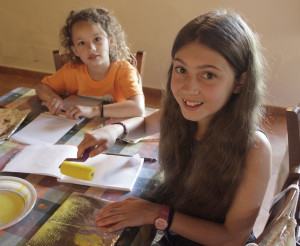 “A school needs to be a place for all children, not based on the idea that they are all the same, but that they are all different.”
“A school needs to be a place for all children, not based on the idea that they are all the same, but that they are all different.”
-Loris Malaguzzi (founder of the first Reggio Emilia School), Newsweek, 2 December 1991
Many people know Reggio Emilia as a beautiful city in the Emilia-Romagna region of northern Italy. However, for many educators and parents of preschool and primary aged children around the world, Reggio Emilia means much more. Reggio Emilia is an approach to education that embraces the ideal that children must have some control over the direction of their learning. After World War II, parents around the city of Reggio Emilia started this philosophy as a reaction to the elimination of Fascism, recognizing a need to foster the foundations of development in their young children in the system of education in Italy. The first Reggio Emilia school was literally built by the parents of the community. The basis for the Reggio Emilia philosophy is founded on the principles of community, responsibility, and respect through a supportive and enriching environment. These principles remain an integral part of the daily attributes of the Reggio Emilia classroom.
This approach, which has become well known and very popular in schools across America and around the world, focuses on the following characteristics:
- Children must be able to learn through hands on experiences using their all of their senses
- Children learn best through a project based approach
- Children must have control of their learning
- Children must be encouraged and allowed to foster relationships with other children and use materials to develop these relationships
- Children must feel safe and free and given ample opportunities to express themselves
As an elementary school teacher at The American School of Milan for six years, I was given the opportunity to visit the training school in Reggio Emilia and learn firsthand what I had only read about in books. I was most impressed with the way the teachers observed the students. They constantly documented the interactions and learning of children to inform their curriculum planning to best reflect the desires and needs of the children. The teachers acted as facilitators of the child’s environment. The environment was also the most incredible aspect of the Reggio Emilia school. The classrooms were large spaces filled with aesthetically pleasing colors. Plants, natural light, and the use of two-way mirrors were all aspects of the Reggio classroom. Two-way mirrors were used for observers to watch children without being seen, so as to not interrupt their play. The windows in the classroom were expansive, which allowed for much natural light. The manipulatives were organized into monochromatic colors and were always accessible to children for their projects. Manipulatives included but were not limited to such objects as sea glass, buttons, beads, and wire. Areas were established in the large space for small group work, dramatic play, and dress up. The walls within the environment were adorned with photographs, and the quotations of children alongside their work describing the process. This experience allowed me to take what I had seen and incorporate elements into my own classroom. These were only a few of the many elements of the Reggio Emilia approach that have been profound to me and have stayed with me as an educator. Upon returning to the United States, I sought out a school in my local area that supported and had elements of this approach. For those parents that have access to this type of education for their primary aged children, I highly recommend it!
Author Rebecca Borgioli is an Associate Editor for ItaliaKids.
Recommended Resources:
“The Best Schools in the World”
Newsweek, 2 December 1991
www.newsweek.com/id/123873
The Hundred Languages of Children: The Reggio Emilia Approach to Early Childhood Education
by Carolyn Pope Edwards and George E. Forman
Bringing Reggio Emilia Home: An Innovative Approach to Early Childhood Education
by Louise Boyd Cadwell
 Add to favorites
Add to favorites
Connect